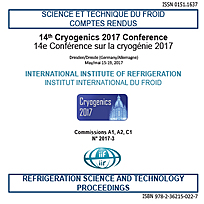
Document IIF
Gouttes cryo-suspendues : vers des échantillons biologiques congelés prêts à l’emploi dans des plaques de culture cellulaire à 96 puits, utilisés à des fins de dépistage.
Cryo-hanging drops: towards ready-to-use frozen biological samples for screening purposes in 96 well plate format.
Numéro : pap. n. 0114
Auteurs : MEISER I., SCHMIDT K., NEUBAUER J., et al.
Résumé
Since assays that are based on human cells, are becoming more and more precise and allow the reduction and refinement of animal testing, their application in drug screening and toxicity assessments is increasing. Decelerating factor for their use often is the lab-intensive routine work that has to be done beforehand and has to be scheduled precisely on demand according to the starting point. To overcome this costly and timeconsuming preparation steps, an application-ready product for screening purposes that can be stored over long periods is desirable. Therefore, we introduce here the Cryo - Hanging Drops (Cryo-HDs): Aliquoted
droplets of cell suspension are frozen via equilibrium freezing on a die-casted, disposable plate that is compatible to 96 well plates. Upon application, it can be taken ready-to-use from a freezer and set on a prepared compound plate diluting the cell suspension drops into the desired media without additional washing steps.
Documents disponibles
Format PDF
Pages : 7 p.
Disponible
Prix public
20 €
Prix membre*
Gratuit
* meilleur tarif applicable selon le type d'adhésion (voir le détail des avantages des adhésions individuelles et collectives)
Détails
- Titre original : Cryo-hanging drops: towards ready-to-use frozen biological samples for screening purposes in 96 well plate format.
- Identifiant de la fiche : 30021770
- Langues : Anglais
- Sujet : Technologie
- Source : Cryogenics 2017. Proceedings of the 14th IIR International Conference: Dresden, Germany, Mai 15-19, 2017.
- Date d'édition : 15/05/2017
- DOI : http://dx.doi.org/10.18462/iir.cryo.2017.0114
Liens
Voir d'autres communications du même compte rendu (71)
Voir le compte rendu de la conférence
Indexation
- Thèmes : Influence du froid sur les cellules, tissus et organes
- Mots-clés : Technologie; Cellule; Cryoconservation; Cryocongélation; Congélateur
-
Special equipment for cryopreservation of tissu...
- Auteurs : SPÖRL G., KLINGNER E., QUINGER J.
- Date : 21/04/2008
- Langues : Anglais
- Source : Cryogenics 2008. Proceedings of the 10th IIR International Conference
- Formats : PDF
Voir la fiche
-
Entwicklung eines Micro-Freezers zur Parametero...
- Auteurs : EVERTZ F., GLASMACHER B.
- Date : 19/11/2008
- Langues : Allemand
- Source : Deutsche Kälte-Klima-Tagung: 2008, Ulm.
Voir la fiche
-
Kryokonservierung und Langzeitlagerung von Nabe...
- Auteurs : EGGER D.
- Date : 18/11/2009
- Langues : Allemand
- Source : Deutsche Kälte-Klima-Tagung: 2009, Berlin.
Voir la fiche
-
Strategie zur Optimierung von Kryokonservierung...
- Auteurs : BERNEMANN I., HOFMANN N., SZENTIVANYI A., et al.
- Date : 22/11/2006
- Langues : Allemand
- Source : DKV-Tagungsbericht 2006, Dresden.
Voir la fiche
-
Freezing osteoblast cells attached to hydroxyap...
- Auteurs : LIU B. L., MCGRATH J.
- Date : 21/08/2007
- Langues : Anglais
- Source : ICR 2007. Refrigeration Creates the Future. Proceedings of the 22nd IIR International Congress of Refrigeration.
- Formats : PDF
Voir la fiche
